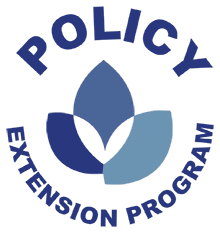The Safe Drinking Water Act (SDWA) is a federal law designed to ensure the quality of Americans’ drinking water. By regulating the public drinking water supply, the public health is also under protection. The standards of drinking water quality are set by the USEPA to oversee the states, localities, and water suppliers who implement those standards. SDWA standards are used to regulate both naturally occurring and man-‐made contaminants that may be found in drinking water. All public water systems should be monitored regularly and comply with all regulations associated with drinking water quality.
Some things to know about the SDWA
The Comprehensive State Ground Water Protection Programs
The SDWA regulates components which are considered as contaminants that are harmful to human health and may occur in drinking water, including:
- Microorganisms
- Disinfectants
- Disinfection byproducts
- Inorganic chemicals
- Organic chemical, and
- Radionuclides.
Within these categories of contaminants, the major ones are synthetic and organic chemicals; fertilizers; pesticides; and wastes from agriculture, industry, humans, and animals.
The Comprehensive State Ground Water Protection (CSGWP) Programs were established based on the SDWA to protect groundwater which is one of the drinking water sources. The CSGWP Program requires agricultural establishment or other agribusiness use designated Best Management Practices (BMPs) to help prevent contamination of groundwater by nitrates, phosphates, pesticides, microorganisms, or petroleum products. These requirements generally apply only to agricultural operations that are subject to public water system supervision.
The Underground Injection Control Program
The Underground Injection Control (UIC) Program is a program associated with the SDWA that regulates injection wells in order to prevent them from contaminating drinking water resources. If an agricultural establishment or agribusiness disposes of (or formerly disposed of) fluids on-‐site in a well (any hole that is deeper than it is wide), such as a deep-‐ cased well, dry well, seepage pit, cesspool, septic system, air conditioning return-‐flow well, or a drainage well designed for storm runoff, it may trigger EPA’s UIC Program. Agricultural producers with agricultural drainage wells must furnish inventory information to the State. A State may require an individual well permit. An agricultural producer must not inject any contaminant into an underground source of drinking water using a well if the contaminant may cause a violation of any primary drinking water regulation or may adversely affect human health.
Sole Source Aquifer Protection
The Sole Source Aquifer program prohibits Federal financial assistance (any grant, contract, loan guarantee, or otherwise) for any project, including agricultural projects that may result in contamination to the aquifer and create a hazard to public health. Proposed Federal financially assisted projects with the potential to contaminate designated sole source aquifers are subject to EPA review. Currently, there are 73 areas designated as protected sole source aquifers.
Wellhead Protection
If an agricultural establishment or other agribusiness has an on-‐site water source (well) that qualifies as a public non-‐community drinking water system, the facility must take the steps required by the state/tribe to protect the wellhead from contaminants. A wellhead protection area is the surface and subsurface area surrounding a water well or well field, supplying a public water system, through which contaminants are reasonably likely to move toward and reach such a water well or well field.

